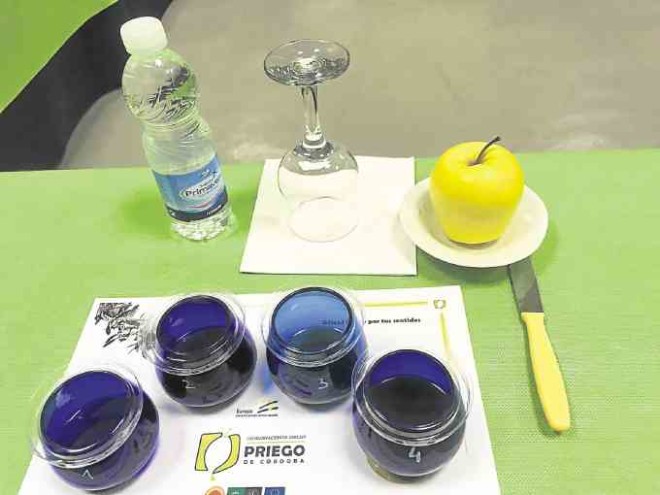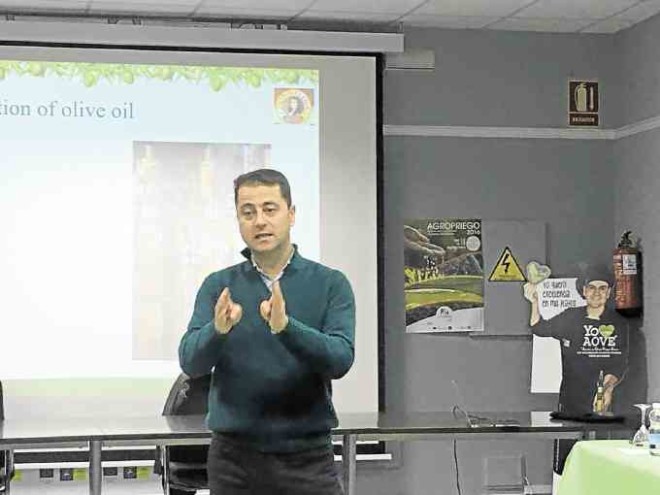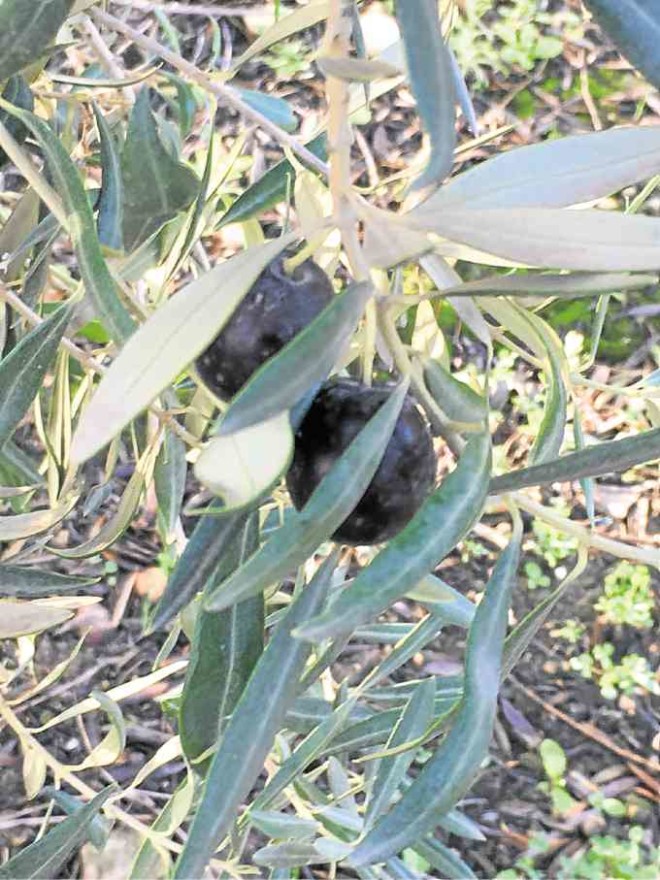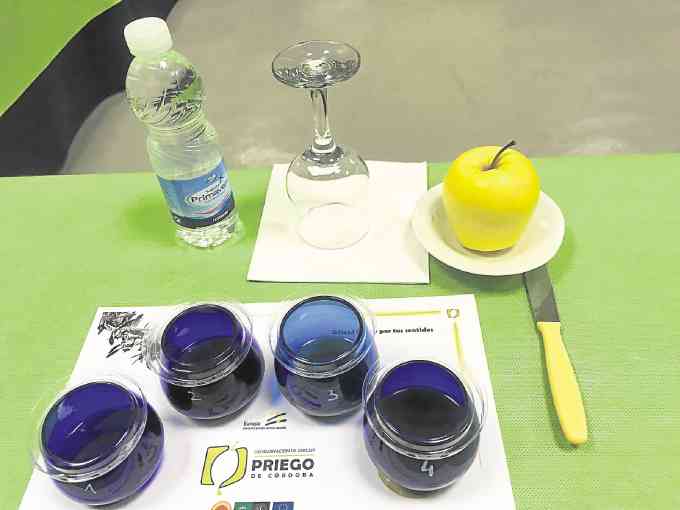
It boggles the mind that 60 percent of the world’s olive oil comes from Spain—from areas like Andalusia, Extramadura and Catalonia—and 45 percent just from Priego de Cordoba.
To dramatize how many flavors and peculiarities there are, on a recent trip, Rafael Muela of Mueloliva, an award-winning maker of olive oils in this lush region, sat some members of Philippine media down for a briefing on the different kinds of olives that make good oil—including the fruity and balanced picudo, grown abundantly in Priego de Cordoba, which brings to mind apples and almonds.
“The amount of the oil, its flavor and aroma are changing,” says Rafael. “That means if we pick a green olive, we will get more fruitiness, green aromas; if we pick one that’s ripe and almost black, the oil is sweeter.” At the plant, the different “custom” blends in each tank are tasted every single day.
One of these tanks holds Doña Elena olive oil, a brand of Filipino company Fly Ace Corp. and the best-selling olive oil in in the Philippines, made and bottled in Priego de Cordoba.
Rafael also led us through an olive oil tasting, which felt like we were sipping vintage wines, what with the attention to the subtle aromas and flavors. Each guest was seated at a place where four dark blue covered and numbered glasses contained different kinds of oil. On the side were a glass of water and an apple with a knife, as we needed to eat a bit of fruit between sips to cleanse our palates.

Why dark glass? Because sunlight is one of olive oil’s biggest enemies, along with humidity, dust, temperature and oxidation. Oh, and the color of the oil means nothing, he told us—it doesn’t matter whether it’s a light gold or an almost dark green. “You’ll be misguided if you use color as an indicator of quality,” confirms Agroatlántica’s Pedro Rubio de Urquia, Fly Ace Corporation’s Madrid-based consultant.
Olive oil tasting is a gastronomic exercise, says Rafael; you judge by the oil’s appearance, intensity of smell and flavor, texture, balance and harmony. You don’t want it to taste like soil or metal, like spoiled wine, or atrojado, best translated in English as fusty, or full of old, dusty, unpleasant smells or flavors.
Do not smoke
You are also advised not to smoke 30 minutes before a tasting. Don’t use perfume or other strong fragrances, do not eat one hour before, and do the tasting in a place free from loud noises and strong smells.
We started with oil No. 1. We had to warm the glass in our hands, uncover it and sniff before covering the glass again. It had a neutral, ambiguous taste and smell, and turned out to be refined oil, like the pomace olive oil used in frying.
After munching on a piece of apple—really helpful!—we tasted No. 3, which had a markedly stronger aroma, and a taste that went from sweet to spicy and slightly bitter. It was identified as last year’s stock of extra-virgin olive oil (EVOO).
Oil No. 2 was even more interesting, smelling of leaves and grass, pepper and spices, but with a mild intensity and some bitterness. The bitterness, Rafael told us, was an indicator of the abundance of polyphenols, the natural antioxidant that makes olive oil so healthy.

This turned out to be none other than the blend for Doña Elena’s EVOO. “You can sell the stronger blends to a premium market that can appreciate it, but the general market still wants the oil this way, mild and fruity,” explains Fly Ace president Jun Cochanco. “We’re constantly tweaking the blend, though, because the market is also constantly changing.”
True enough, oil No. 4 almost knocked us out with its rich riot of aromas, from grass and tomato to pepper and radish, that lingered in the mouth long after you swallowed it. “This EVOO stays for a while,” says Rafael with a laugh. “It doesn’t say ‘Hi’ and ‘Bye’; it asks, ‘How are you? How is the family?’”
It turned out to be Mueloliva’s gourmet brand, Venta de Baron EVOO—not exactly a gentle introduction into the world of olive oil if you’re not used to it, but strong and full of character, indeed.
“The point is, find what you like,” says Rafael. “Get into it step by step. It’s healthy, so find out how you can use it in your food.” Rafael says he uses different oils for frying, salad dressing, even making his own mayonnaise. “Different moments, different food, different happiness. It takes time, but do it, and your body will be healthy for the next 20 years.”













































